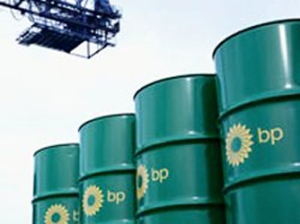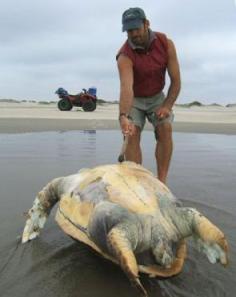The mystery of the 20th April Blowout revealed – Answers to questions Raised 001.
by BK Lim, Geohazards Specialist (18 August 2010, hydrocomgeo@gmail.com).
Every questions posted on my newsvine-blog had been answered as accurately as possible. However, I cannot track and answer questions posted on other blogs. Short and quick answers to questions on a complicated matter such as a blowout do no justice and can be easily misconstrued. This article is specially written to address some of the serious questions posted on other blogs that had recently been brought to my attention and posted on my blog on 18 Aug 2010. As can be seen, the answers to each short question are actually quite long.
In any developing disaster situation, many technical details had to be intentionally left out until they can be verified. Like any responsible blogger-citizen, I spent a lot of time in seeking, checking and analyzing facts and data before arriving at the conclusion. Even in the “rush-rush” oil industry, 2 to 3 weeks is the normal time-frame in coming out with an assessment report. Predictive Truth reporting is 10 folds harder than factual reporting. There must be consideration for facts deliberately hidden from public view and information that had been unintentionally or intentionally distorted to mislead. I had been severely criticized and widely condemned for being late in answering my critics; as you can see below:
Pity you didn’t take your own advice.
The points raised in my post above are a catalog of what I can only assume are errors, as you have failed to address them. I will not be asking Mr. Berman to elaborate on anything, as I think you have just discredited yourself beyond redemption and checkmated yourself.
Comments made by FintanDunne at #9 Aug 19 2010.
Many questions cannot be answered in isolation without being ripped apart by the waiting pride of lions. Many sensitive revelations cannot be revealed before the time is ripe, in this chess game of “hide and seek” and “catch me if you can” multi-billion cover-up scandal that is slowly being unraveled. Time is on the side of truth and it is the detractors’ strategy to push the truth seekers to their untimely death (sorry pun intended). They have the funding and wide array of machinations to seek and destroy all those that stood up like a “sore thumb” in their quest to dupe the unsuspecting world. In the battle of David Vs Goliath, it has been shown time and time again David’s crowd of encouragement will quickly dissipate at the first onslaught and massive show of force by Goliath. That is the strategy Goliath is embarking on. The only weapon the minority truth-seekers have is the little “logic truth-seeking” knife to cut the soft underbelly of the giant mammoth. A simple but nevertheless, still a potent Giant Killing weapon if only one is brave enough to get within striking distance. Our quest for the truth will be lost, if we all lose faith in our conviction at the first sign of trouble.
We cannot stop and turn back now when we are getting so close to the truth. (bloggers like Freebirdreaming and Kokohito will see to that). The incessant attacks on my credibility are first real signs we have stumbled on the truth that had been so well hidden under tons of BP’s paid PR bullshits and BP’s funded Oilmen Experts’ opinions and comments.
freebirdreaming
BK……….. it more then ‘that’s all we can do’, and it pisses me off when you talk like that.
now……. do what you do! you do it so well.
8!#2.2 – Wed Aug 18, 2010 3:09 AM HKT
kokohito
BK Lim
initial influx that caused the blowout was from the extended gas charged pressure (EGCP) zone and not from the bottom of the well as most had thought so
Read your articles again except that this time we appreciate the severity of the problem that GWSF represented.
BP must extract the oil NOW. Stop the carnage. To those people who still choose to cohort with BP in this massive cover-up is just abominable!
We are now in a ‘war’ where good is fighting evil on a massive scale. May all the good people rise to the challenge now and fight we must to win this ‘war’. Enough is enough!
It is like fixing a giant jigsaw puzzle.
Thank you very much for your herculian effort.
Yes, I am voting you up.
6!#15 – Fri Aug 20, 2010 2:56 AM HKT
Like a giant jigsaw puzzle, it is important to have a general framework and not be too obsessed with fine details as otherwise we would miss the forest for the trees. If the framework is correct, the missing pieces will fall in place as new evidence or facts are verified. Many investigations in the past had gone off-tangent due to inaccurate facts or lack of data. To keep the articles short some technical details unfortunately had to be left out; for later postings. Still I could not resist the temptation of “letting the cat out of the bag” in addressing the genuine queries from ardent supporters. Bits and pieces of the answers “urgently pressed for by my detractors” can be found in the numerous lengthy comments not only in my blog but in so many articles I had commented on. I had personally lost track and so the phrase “my answers can actually be found hidden in my previous articles and comments” should be taken in good faith and not misconstrued as being sinister with the intention of “Now I find that either you are wriggling out of errors or claiming to be playing silly mind games”. Should I be denied the justice of answering the questions first before being condemned? In several emails in early August, I apologised to many for my delayed responses to their queries due to the grief and shock of the passing of an immediate member of the family. I am sure all human beings can sympathise with that.
Diagrammatic illustrations are time consuming. Some inconsequential errors and omissions that do not really matter in the larger scale of scheme were reluctantly left uncorrected due to time constraints. Crucial mistakes that could make the difference in the interpretation of the blowout were however tackled as soon as they were discovered. The objective of such an approach is to ensure there is no 180º reversal in the journey towards revealing the truth.
1. Surface location of DWH and well location that blew 20th April 2010.
Ballastic Analysis of DWH & Riser Wrecks
“It is therefore intriguing that Well A should be more than 520ft SSE of DWH’s surface location.”
Question: #8 (1)
Have you compared your figure of 520ft NNW of Well A with the official position of the DWH rig? Is it different than the official position, or is the official position of DWH in NOAA, or Congressional reports assumed to be the position of well A? It’s one of the strongest points you make yet you only assert it without laying any foundation.
The fact that BP would drill at an unreported location in obvious violation of mandatory reporting to MMS, means that the official well location would still be Well A. If BP were to report it was drilling the second well at a different location (other than the approved Well B location) BP would have to notify and submit a new Exploration Plan to MMS. That would mean more expensive delays since BP cannot off charter DWH while waiting for approval.
Inaccurate reporting is also evident in BP’s well activity reports. Alex Higgins in his excellent detective work (Suspicious BP-well-activity-reports) noted several discrepancies, including the change in the well-bore number from 00 to 01 and ByPass no: from 00 to 01 for the week 3/14/2010-3/20/2010. There were 2 Well Activity reports for the same period with conflicting information (report nos: 150694 and 150699). For example in the item Last BOP test on 3/15/2010, the high pressure was 6500psi while in the earlier report for the same test the high pressure was 10,000psi. The 2 conflicting reports also reported contradicting well-bore and bypass numbers.
Why did BP choose not to drill at Well B location as the second well?
(Answer given in #4 of DWH Blowout CSI)
Most oil companies would apply for a backup location (in this case Well B) close by since they were unsure whether it would even be drilled. At 300ft apart (between well A and B), even a layman from outside the oil industry would see that it is ridiculously near especially when the water depth is 5000 ft (6% of WD) and the reservoir target is another 18000ft below seabed (1.3% of total drill depth). No for all purposes and intent, Well B location is for “show only”; location wise but it has other purposes.
A second well would be useful in case of unexpected delay and as a backup location. As in BP’s case, the permit for well A and B was valid for the period; 15 April-24 July 2009 and from 15 April till 24 July 2010 (100 days each) respectively. Actual drilling of each well normally takes between 2 to 4 weeks with another 2 to 3 weeks for testing the well. The period / time of exploration is more important than the location since MMS can keep track of the days spent at location but not the precise well location. Even then BP did not drill the wells within the allocated exploration time frame as permitted in BP’s Application to MMS, Control no: N-9349 dated 10 March 2009. Well A was drilled by Marianas from 7 Oct till 9 Nov 2009 and by DWH “officially” from 6 Feb till 20 April 2010. This is proof that actual field operations do not strictly follow proposed plans in the approved MMS permit.
Obviously with the number of serious out-of-control well problems BP was having at Well A, it would be suicidal and outright Dumb if not Criminal to drill at well B which was so close to Well A (only 300ft). BP might have also realised that Well A and Well B lie too close to a shallow NE-SW fault. Video clips of oil-gas gushes at points along this fault line can be seen on the You-tube website. Figure F1 showed just 2 ROV locations on 10 June and 25 May 2010. This also precisely the same reason why BP could not have sidetracked or bypassed from Well A. To do so would have been willful negligence. Was there a thorough investigation on the drilling problems at Well A before proceeding to the second well as required by International Safety Policies.
BP arrogantly thought that by moving approximately 750ft NNW perpendicularly to the fault-line, they had minimized the blowout risk. Whether BP had diligently analysed the geohazards risks or had acted negligently with an arbitrary offset from the problematic Well A, is open to question. Being an experienced technological giant, BP should have known that it is not a matter of distance and direction. There are enough documented past disasters that had resulted from such hasty and arbitrary shifting of well location without a proper and diligent geohazards assessment. It is also a question of legitimate insurance coverage since each well location must be accompanied by a drilling risk report just as Well A and Well B must have had one each. It is also strange that BP had not transferred responsibility and liability to the geohazards expert’s drilling risk assessment on the two wells drilled, as it is becoming more and more obvious that a simple well blowout could not have been so disastrous. Even by looking at the bathymetry, it is obvious that there had been negligence in the charting and assessment of the geohazards. See more elaborate discussions in Would-a-better-bathymetry-chart-have-made-the-difference?
Out of plain ignorance, incompetence or arrogance, shifting the second well 750ft NNW of Well A, had only increased the drilling risk by moving it closer to the source of the geohazards problem. See the discussions on Misinterpretation on Seabed Escarpment below:
Man of Knowledge
Have you seen this document?
Click to access 29977.pdf
It describes conclusions of a shallow hazards assessment (page 10) and indicates the escarpment is a “sea floor expression of a deeply buried scarp associated with mass wasting.”
I would be interested in your comments on this.
5!#29 – Thu Aug 5, 2010 4:40 AM HKT
BK Lim
The full paragraph is as follows:
The seafloor at the proposed “A” location is in a water depth of 4992 ft and dips to the south-east at ~3.0º. The only seafloor feature identified on the exploration 3D seismic data within the vicinity is a low-relief escarpment approximately 1,000 ft to the south of the “A” location which is the seafloor expression of a deeply buried scarp associated with mass-wasting.
If you read carefully, the escarpment was identified in the exploration 3D seismic data, not any of the geohazards site survey data. Isn’t that funny? That by itself should ring several alarm bells. ~ 3º is mighty steep in seabed bathymetry.
1. It means that the geohazards site survey did not pick up the escarpment even though it was identifiable in the broader exploration 3D seismic data and satellite images. So what was wrong with the geohazards site survey whose primary objective was to identify and analyse structural features like this? Why was the 3D seismic doing the work of the High resolution Site survey?
2. Exploration and geohazards experts have totally different perspective. Geohazards Geophysics focuses from seabed to about a thousand metres (Max). The report says – low relief escarpment, 1,000ft south of loc A. In my article on whether “a better bathymetry interpretation could have made the difference?” location A and B were smack on the top edge of the escarpment. If you look at the satellite image, you cannot miss the whole escarpment. The total drop in height is about 150-175ft. The 3-D seismic data (being designed to image thousands of metres below) cannot see clearly at seabed level (an effect we call smearing). Why spend more than a million bucks to run a site survey specifically designed to pick up such details, only to ignore it and use 3D seismic to detect the “low relief” without even an estimate of the height? It is like using the jack hammer to drill a pin-hole.
It also reminds me many years ago where one enthusiastic exploration geo who thought that his 3D exploration seismic could identify the geohazards better and ended up with a blowout. Another one tried and picked multiples as his hazards anomalies. As I said before, each type of data has its own use and none is superior over the other.
3. Being exploration experts they probably did not see the significance of the escarpment and probably did not understand the deep meaning of the words used “deeply buried scarp associated with mass wasting”. Deep means they understood that there was a deeper extension to the feature observed on the seafloor. It means that it is not a superficial structure with no “roots”. Mass wasting – (I don’t normally like to use this term) basically means “wasting” like in deterioration, weathering or breaking down. So combined with the word mass – the whole description simply means an unconformable structure extending deep below the seafloor. Now doesn’t this fit the description of my model – a fractured (/weathered/disintegrated) dyke/salt dome/diaper or any vertical body?
So BP did actually notice the structure but did not realise how hazardous it was. Sounds familiar? Those who had commented and ridiculed my model as being “crap, comical and total nonsense” probably had the same misunderstanding or poor concept of geohazards assessment. The question being asked at this point is; Where were BP’s geohazards specialists? Was BP trying to save some money by using 3D seismic experts to map both the oil reservoir and geohazards as well?
Obviously the end result is as disastrous as the previous 3D-seismic experts’ attempts at geohazards assessment more than 20 years ago – a blowout.
Exploration and Geohazards Geophysics may share the same fundamentals but are worlds apart in specific objectives and techniques. Needless to say, there are many experts within the geohazards industry who are not even aware of the fundamental differences. We are sometimes our own worst enemies.
5!#29.2 – Fri Aug 6, 2010 9:32 AM HKT
Evidence BP drilled the 2nd well at S20BC location – refer to figure 3 (Forensic Analysis of DWH & Riser Wrecks)
1. The massive oil gush (largest of the reported 3 leaks along the fallen riser) at S20BC is close to Centre of debris circle (suspected surface location of DWH) – approx 120 ft NW, 2.5% of water depth (WD).
2. This is evidently an explosion crater with debris and continuing oil-gas gushing out of a sub-horizontal pipe that looks like a well-head casing. One video comment had estimated the diameter of the pipe to be 21 inches – same as well head casing(?). Though there is no scale to substantiate this comment, there are distinct differences with the damaged riser piping seen on many ROV videos.
3. Initial video footage seemed to focus primarily at this particular oil-gas gush location (S20BC) up to end of May 2010; giving the impression this was the blown-up well location. Nothing was mentioned and shown of the BOP at Well A.
4. BP’s efforts and statements to contain the 3 major oil leaks at seabed with the use of giant container domes which were designed to dig into the seabed, appeared to be sincere in the immediate aftermath of the 20th April Blowout. If the leaks were actually on the riser, why was there a need for 3 containment domes when the riser could have been cut and capped at the BOP as had been done since mid-June. This implies the leaks were coming out of the seabed (through shallow faults coming close to the seabed) and not from the riser which could have been cut and removed.
5. Mysteriously, these sincere efforts appeared to diminish as the full financial implication and magnitude of the oil gushes at several reported locations set in. In the 10 May BP’s statement, the giant containment dome parked at the seabed near the spill area was never used at all. One has to wonder why BP would spend all that expenses to build and transport these containment domes and never even try them on before declaring they could not be used. At the same time, BP appeared to be backing off the containment option and preferring the “top kill” option.
6. How could the hydrates have built-up at the dome which was not even placed over the gas leak? Was this a Freudian slip? Why were the BOP and the “Top Kill” option mentioned only 20 days after the blowout? Surely BP is no novice to containing a disaster situation? Did the hawks win over the doves in the battle of Evil Self-Interest & Mass Deception Vs Admitted Liability & Sincere Containment?
7. Video footage of gas seeps, “gas floornado” and cloud (gas) bursts recorded from Ocean Intervention III and gas dispersant operation at S20BC, suggest that the leak at S20BC is more significant than reported.
8. The “Cut Riser” location in the vicinity of S20BC in the absence of other seabed man-made installation is highly suspicious.
9. A blowout at S20BC location would be consistent with forensic analysis of the debris pattern of DWH and twisted riser wrecks mapped by NOAA. See the almost symmetrical fallout pattern in figure F1.
The containment dome that was deployed last week has been parked away from the spill area on the sea bed. Efforts to place it over the main leak point were suspended at the weekend as a build up of hydrates prevented a successful placement of the dome over the spill area.
A second, smaller containment dome is being readied to lower over the main leak point. The small dome will be connected by drill pipe and riser lines to a drill ship on the surface to collect and treat oil. It is designed to mitigate the formation of large hydrate volumes. This operation has never been done before in 5,000 feet of water. In addition, further work on the blow-out-preventer has positioned us to attempt a “top kill” option aimed at stopping the flow of oil from the well. This option will be pursued in parallel with the smaller containment dome over the next two weeks. – Update on GOM Spill Response – 10 May
Evidence that Well A could not be the well drilled when the blowout occurred on 20th April 2010
–refer to figure 3 (Forensic Analysis of DWH & Riser Wrecks)
1. Well A is approximately 600 ft SSE (12% of WD) from the surface location of DWH (estimated from the debris circle drawn to connect the major debris from DWH). It would not be logical for DWH to be offset so far to the north from the Well A seabed location.
2. Alternatively, if DWH were to be directly above Well A location (within tolerance of a couple % of water depth) then the debris circle should have been centred around Well A location. This is not observed in the debris pattern. If the case is made for the skewed fan-out debris pattern in the direction of the falling riser (towards NW) and DWH wrecks, then the debris fan-out pattern should be as shown in figure F2. As debris fall further away from Well A (source) in the direction of WDH wreck, the angle with respect to the line between Well A and DWH wreck, and the source to the debris should get smaller. Thus, the fallout angle for RTD1 should be larger than that of RTD2. However, the converse is observed. The angle for RTD2 at 55º is greater than the fallout angle for RTD1 at 44.5º. This again proved that DWH could not have been vertically above Well A location.
3. The badly twisted and standing riser wreck also proved that DWH could not have been above Well A. It is practically impossible for the riser to be unbroken (as claimed by BP) if the riser had been “anchored” to the BOP attached to Well A. On the other hand, if the lower part of the riser had broken off (contrary to BP’s claims), the pointed “V” wreck pattern should have been radiating from Well A location and not S20BC location. Note that figure 7 was illustrated with the correct aspect ratio (ie the vertical scale is equivalent to the horizontal scale).
4. Further if the broken end of riser resulted in the oil gush at S20BC, there should have been no further leaks beyond S20BC. Clearly this was not the case, as BP reported 3 leaks along the twisted but unbroken 5000ft of riser string. See AlJazeera illustration in figures 7a-7b.
Refer to figures 3a to 3b of Ballastic Analysis of DWH & Riser Wrecks and figure F2.
5. If the riser and BOP were attached to Well A as claimed by BP, then the oil and gas should be gushing out of the riser from the south. But all the video footage clearly showed the oil and gas to be gushing out from the north?
6. If the pipe had been severed at the southern end, how can there still be any flow connection to Well A? It is very clear with the illustrations that oil could not have flowed from the south (Well A) but from a location in the north (S20BC?) which BP was drilling when the well blew up on 20th April 2010.
7. BP’s Gulf Disaster Relief Efforts must have been an elaborate Art of Mass Deception since the 10th of May, 20 days after the 20th April blowout.
Is there a possibility BP actually drilled 3 wells?
Though BP has officially declared having drilled only Well A, there is a possibility that on 6 Feb 2010, DWH drilled Well B instead of reentering Well A which was abandoned on 9 Nov 2009; again without informing MMS. Well B would be just as problematic as Well A, since the same GWSF hazardous condition spans over the three well locations (A, B and S20BC). On the same basis, Relief Well D would be more problematical than Relief Well C which is located at the base of the seabed escarpment. Well A, B, S20BC and Relief Well D are all located within the southern slope face of the escarpment. It is inconsequential whether BP did or did not drill Well B (instead of Well A as officially declared), the fact remains that BP moved to the unreported S20BC location after abandoning the Well A (or Well B as the case may be) in around 17 March 2010. On 20 April 2010, DWH blew at S20BC the unreported mystery location that is still leaking oil and gas into the gulf.
The most important question that begs an immediate answer: Why would BP go through such an elaborate scheme of Mass Deception? They must be pretty sure no one will unravel the truth. There must be more skeletons in the closet.
If you had read my posting on the blowout carefully, the initial gas influx that caused the blowout and fire on DWH was from the extended gas charged pressure (EGCP) zone and not from the bottom of the well as most would have thought. Haliburton would be pleased to know that their bottom cement plug did not fail immediately. There were many technical gaps I had to leave out (for various reasons) until I can find the conclusive evidence. DWH burnt for 2 days fed by gas and oil flowing from the shallow part of the aquifer within the GWSF zone (Why was DWH Blowout so disastrous and beyond patch-up.) This will need more explanation with diagrams in next sequel of Answers to Questions Raised -002.
by BK Lim, Geohazards Specialist (18 August 2010, hydrocomgeo@gmail.com).

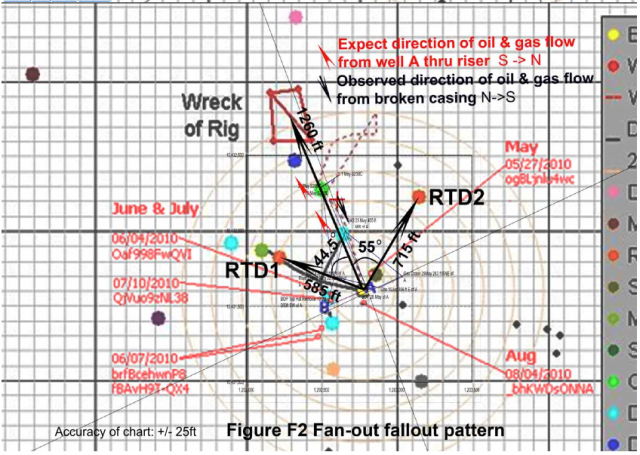

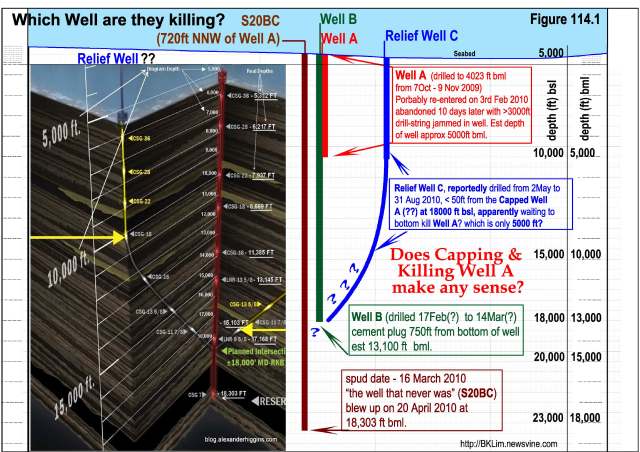



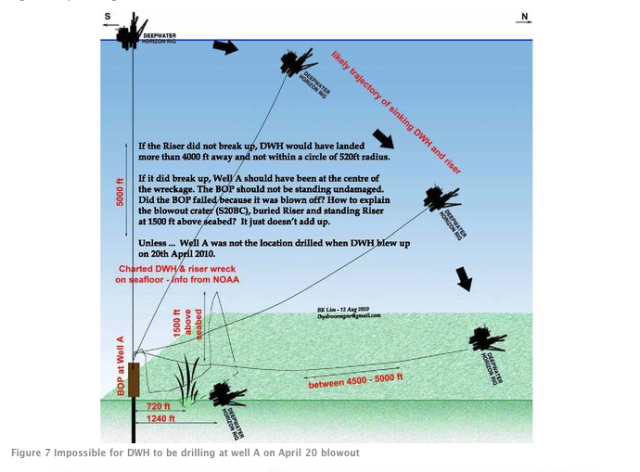

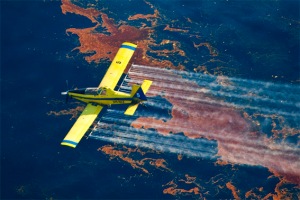
 S
S